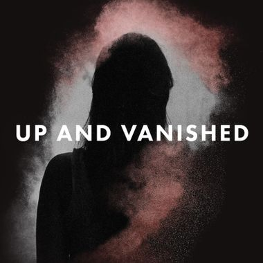Seminar Blogs
“In Your Mind’s Eye: From Mike Pearson’s Retraced and Redrawn to True-Crime Podcasts” – Naomi Tidball
“The strands were very thin, this is partly due to date (100yrs ago), so the circumstances were difficult. The local historian of the town—who were victims of this riot—they have a very developed account of how the rioters came into the house. It is difficult to get the particulars of the accounts.” (Pearson 2020)
From our last Transmission in Motion seminar, Dr. Mike Pearson—professor at Aberystwyth University—narrates and returns spectators to the arcane event of 1919, The Cardiff Race Riots. Pearson’s narration produced a sight of visual chaos for his spectators, which resonates with the documentation of the events that transpired over 100 years ago. Pearson later presented on the creative and curation process following an extensive amount of research, Pearson amassed evidence through retracking and city-scaping the riot and procuring distant and—often—obscure accounts via the town’s newspapers and former families within the area. (Pearson 2020) In the efforts of reassessing past historical events, Pearson (et al)’s research and theatrical presentation on The Cardiff Race Riots (1919) reminds me of other historical research efforts via mediated platforms—such as audiobooks and podcasts; how the retelling on the process of gathering evidence or information engages spectators and contributes to the narration of past events.
 There is a recent increase in popularity and in the advertisement for audiobooks and podcasts. Pearson’s work uses visuals—accessible online—throughout the recording; I am intrigued by the choice of sound as a supplementary effect to evoke and lead and insert listeners into a story or event. The podcast, Up and Vanished (2016) is a recent and familiar example of combining both recorded research, narration, and sound devices to anchor in their listeners. Sound devices are extensively used within the sub-genre of true-crime podcasts. Sound becomes a useful tool which engages and signals various components of a recording, and they are not sporadic in their implementation (Coulthard 2018, 557); an ominous tune might inform a listener in a segment where they found new evidence; ergo, sound invites the listeners “to think alongside the detective.” (Coulthard 2018, 557) Director Payne Lindsey (2016) created a true-crime documentary podcast; each week, Lindsey would discover new evidence on the cold case of Tara Grinstead; in working with detectives, reading archives, and interviewing local inhabitants—Ocilla, Georgia— the podcast influenced a movement to re-open the former case. Throughout the series, Payne Lindsey—who is also a film director—provides distinct sound textures that notifies their listeners towards different thematic sequences throughout episodes.
There is a recent increase in popularity and in the advertisement for audiobooks and podcasts. Pearson’s work uses visuals—accessible online—throughout the recording; I am intrigued by the choice of sound as a supplementary effect to evoke and lead and insert listeners into a story or event. The podcast, Up and Vanished (2016) is a recent and familiar example of combining both recorded research, narration, and sound devices to anchor in their listeners. Sound devices are extensively used within the sub-genre of true-crime podcasts. Sound becomes a useful tool which engages and signals various components of a recording, and they are not sporadic in their implementation (Coulthard 2018, 557); an ominous tune might inform a listener in a segment where they found new evidence; ergo, sound invites the listeners “to think alongside the detective.” (Coulthard 2018, 557) Director Payne Lindsey (2016) created a true-crime documentary podcast; each week, Lindsey would discover new evidence on the cold case of Tara Grinstead; in working with detectives, reading archives, and interviewing local inhabitants—Ocilla, Georgia— the podcast influenced a movement to re-open the former case. Throughout the series, Payne Lindsey—who is also a film director—provides distinct sound textures that notifies their listeners towards different thematic sequences throughout episodes.
Through the efforts of uncovering and establishing context to past events, Mike Pearson’s The Cardiff Race Riots (1919) and True-Crime podcasts such as Payne Lindsey’s Up and Vanished (2016) exemplify how that which is forgotten—and often misguided and lacking in information— can be retraced and revisited; both narration and their process of research are equally admirable; they satiate and transmit their spectators into the historical moments of the past. By using sound devices and oral communication inserts listeners, presses an audience to mentally recreate a visual; this method reiterates and demonstrates the notion of chaos and confusion which are predominant within both narratives.
References
- Coulthard, Lisa. “The Listening Detective: Thinking Music, Gender, and Transnational Crime’s Affective Turn.” Television & New Media 19, no. 6 (September 2018): 553–68. https://doi.org/10.1177/1527476418768008.
- Lindsey, Payne. “Story.” Up and Vanished Season 1. Accessed January 9, 2021. https://season1.upandvanished.com/story/.
- Pearson, Mike, interview by Maaike Bleeker, Transmission in Motion, Utrecht University, December 16th, 2020.
- Utrecht University. 2020. “Transmission in Motion Seminar (2020-2021): “The Cardiff Race Riots (1919): retraced, redrawn” – Mike Pearson (Aberystwyth University, UK).” Transmission in Motion (blog), Utrecht University. December 16th, 2020. https://transmissioninmotion.sites.uu.nl/transmission-in-motion-seminar-2020-2021-the-cardiff-1919-riots-redrawn-project-mike-pearson-aberystwyth-university-uk/.
*Image credits: Lindsey, Payne. “Story.” Up and Vanished Season 1. Accessed January 9, 2021. https://season1.upandvanished.com/story/.

